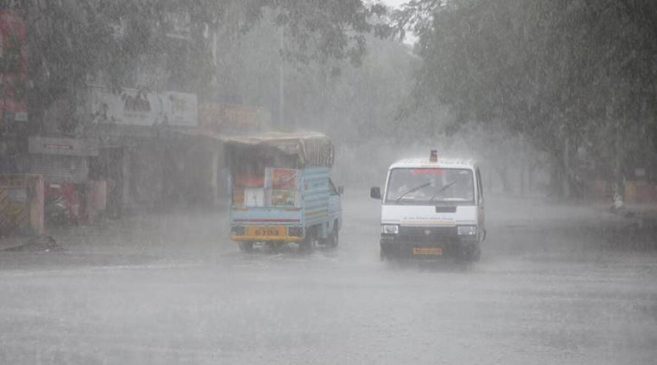As many as 22 flights were diverted from Delhi International Airport late Thursday night.
For the past two days, heavy rains have lashed parts of Delhi-NCR. As many as 22 flights were diverted from Delhi International Airport late Thursday night to airports in Lucknow, Jaipur, Dehradun, and Chandigarh due to the inclement weather. Flights were diverted to different locations on Wednesday as well. The rains have also reduced the maximum temperature in the capital. The maximum temperature was 32 degrees Celsius and the minimum was 17.8 degrees Celsius, according to the Indian Meteorological Department (IMD) bulletin on Thursday.
In the latest update, IMD tweeted that thunderstorm with light to moderate intensity rain would occur over and adjoining areas of few places of Delhi (Mundaka, Pashchim Vihar, Rajouri Garden, Jafarpur, Nazafgarh, Dwarka, Palam, IGI Airport). The weather service has blamed the unusual rains on western disturbances.
Also Read : Govt Hikes Interest Rates On Small Savings Schemes By Up To 70 bps for April-June 2023; Latest Rates
What are Western disturbances?
Western disturbances are weather systems that originate in the Mediterranean region and move towards the Indian subcontinent. They are a common meteorological phenomenon that affects the weather patterns of Northern India during the winter months. These disturbances are caused by the interaction between cold polar air and warm air in the Mediterranean region, which results in the formation of a low-pressure system.
As these weather systems move towards India, they bring rain, snow, and thunderstorms to the northern parts of the country, including Delhi. The intensity and frequency of western disturbances can vary, and they can last for a few days to a few weeks.
This year, northern India experienced higher-than-usual high temperatures in February and early March. While the rains have brought relief to the residents of the area, they may also harm crop ripening, exposing farmers to losses and increasing the likelihood of high food inflation.





































